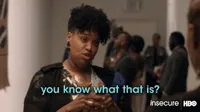For this week’s resource blog, I found a paper on different
strategies to use for reading science content. The paper is called Strategies for Teaching Science Content
Reading by Patrick E. Croner. In this paper, he
gives about fifteen different strategies that are all useful and easy to apply
into the classroom. One of the strategies he talks about is the “Click or Clunk”
strategy.
This is useful when having to read in the science textbooks and the
point of it is get students to ask themselves if the content is “clicking,”
meaning they understand what they’re reading, or if they’re “clunking,” meaning
they don’t understand. If the student is “clunking” then they need to ask
themselves what they aren’t understanding and find a way to help them
understand what they’re reading. I liked this strategy because I think that
self-monitoring during reading can be really hard to do, so this is something I
would like to implement into my future classrooms.
Here's the link to the paper: https://files.eric.ed.gov/fulltext/EJ1058676.pdf
(162)


